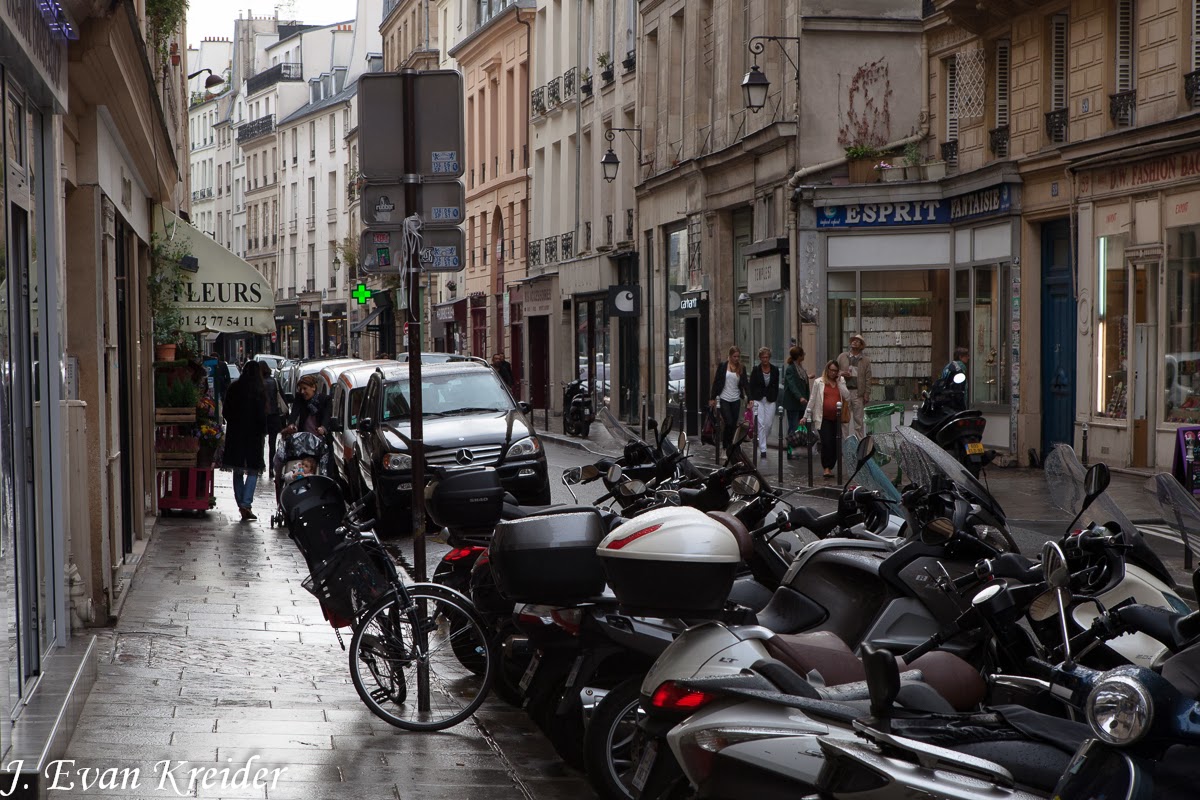People were leaving work, doing errands, things Parisian. No tourists in sight (except this photographer).
Activity at local cafés was picking up, as people sought refuge under the awnings.
Shop sales were hardly brisk, so it was a good time to do some texting.
even while on the way home . . . .
 |
| Prayer |
Children were returning home from school. It is difficult to chat on some of the very narrow sidewalks with bins out for pickup and traffic on the mediæval one-lane road.
This clever graffito is a takeoff on the art-statement Marcel Duchamp made in 1919, the year Dad was born--Mona Lisa plus mustache and goatee. I won't tell you what the letters actually mean, or are understood to mean when pronounced quickly, but when asked by the media, the painter said something polite like, "there is fire down below". Over the decades, postcards of his work sold well, and people have been adding mustaches to public posters ever since. This clever version superimposes part of the face of President François Hollande over Ms. Lisa. The end result is anything but "IL. H. O. O. Q."
Trucks parked in certain neighbourhoods over night are given free paint jobs, sort of like tattoos.
"Kraken, I love you!" Kraken is one of the most fearsome Nordic legendary sea monsters. Not a bad piece of work, incorporating pipe, wall inset, roof flashing, and all.



















































